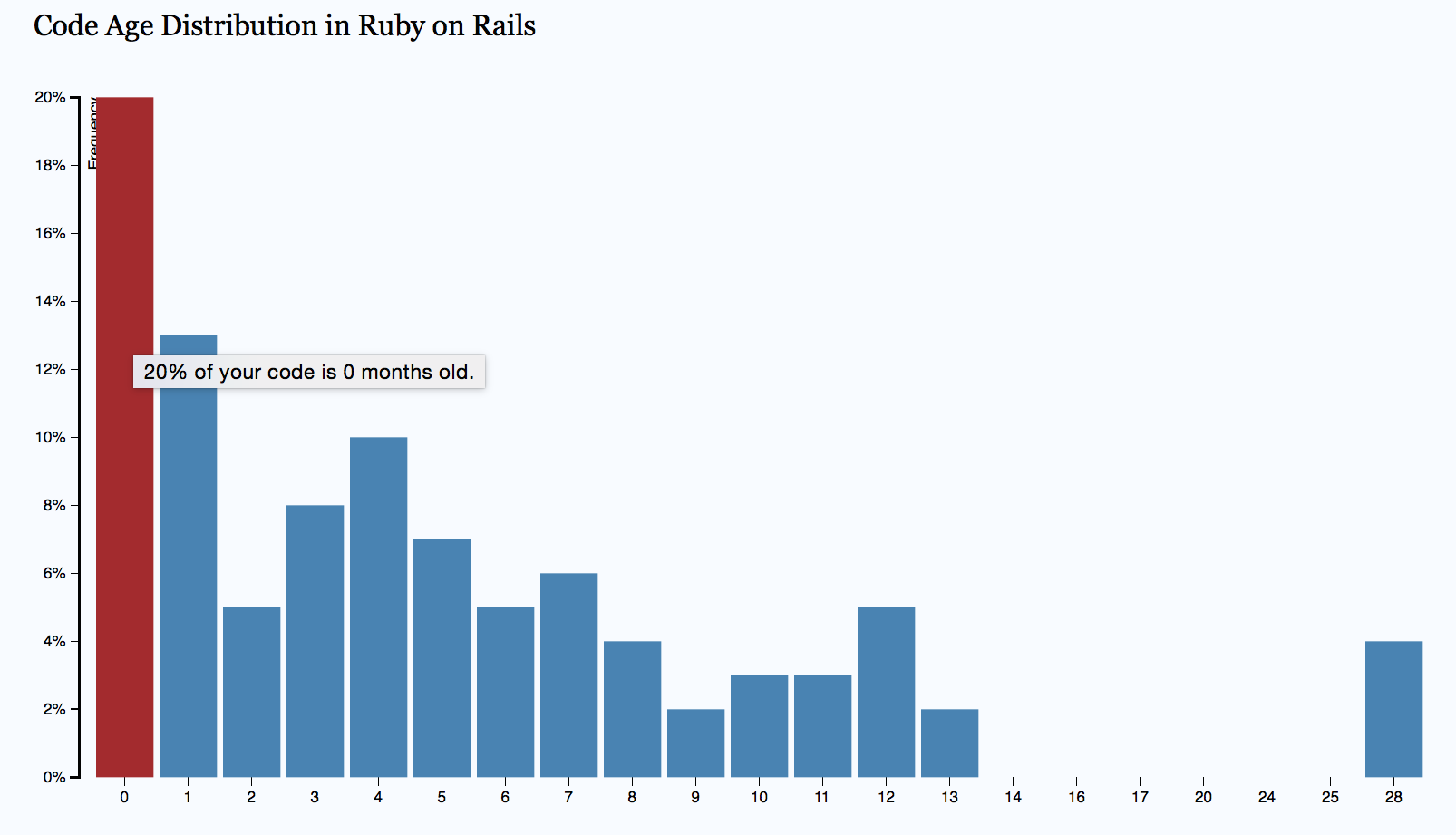Code Age¶
Code Age is a much underused driver of software design. In this guide we’ll cover how you interact with the analysis results and how you use the presented information to guide your architectural decisions.
Drive to Stabilize¶
Code evolve at different rates. As you’ve learned in the Hotspots Guide (see Technical Debt), some parts of your codebase tend to change much more frequently than others. The Code Age Analysis gives you another powerful evolutionary view of your system. It’s a view that helps you evolve your codebase in a direction where the system gets easier to maintain and more stable.
The age of code is a factor that should (but rarely do) drive the evolution of a software architecture. In general, you want to stabilize as much code as possible. A failure to stabilize means that you need to maintain a working knowledge of those parts of the code for the life-time of the system.
How do we measure Code Age?¶
CodeScene measures code age per source code file (or any content, actually). We define the age of code as “the time of the last change to the file”. Note that this means any change. It doesn’t matter if you rename a variable, add a single line comment or re-write the whole module. All those changes are, in the context of Code Age, considered equal.
This definition is fairly rough and in the future we’re likely to take the amount of change to a file into account when calculating age. But for now, age is that time since the last change. And the resolution is months.
Inspect your Code Age Distribution¶
The age distribution graph shows how much of your codebase that you have managed to stabilize.

Fig. 202 An example of code age distribution.¶
The example graph in Fig. 202 shows a codebase under heavy development. As you see, 20% of the source code files have been modified the past month. Here’s how you use this information:
See how much of the code you manage to stabilize.
Identify sub-systems that have become commodities.
Let’s discuss these two points. First of all, you want to stabilize as much code as possible. Stable code means that its quality is known. It also limits the size of the codebase where a developer has to maintain an active mental model of the code. New code (0-2 months old) is of course where the current development happens and you expect some activity here; a system that doesn’t change is a system that no one uses. What you want to look out for is everything in between. That is, the code that’s neither particularly old nor do we need to work with it on a monthly basis.
The reason we’d like to avoid having code that is neither old nor new has to do with human forgetting. Such code is old enough that the original programmers are unlikely to remember the details. If we need to dig into code that we no longer remember well, we pay a high price. So please watch out for a codebase where you have a flat distribution.
The second use case for Code Age Distribution is to identify commodities. A commodity is code that’s been stable for a long time. You see an example from the development of the Clojure programming language in Fig. 203.

Fig. 203 Code age distribution in Clojure.¶
This is a good starting point; If you have a lot of code, as in the distribution in Fig. 203, that you haven’t modified in years, there’s an opportunity to drive your software architecture in a leaner direction.
Possible sources of Bias in the Age Distribution¶
As noted above, code age is measured since the time of any change to a file. That means, if you re-organize your codebase by moving source code files to different folders, your code will appear much younger than it actually is.